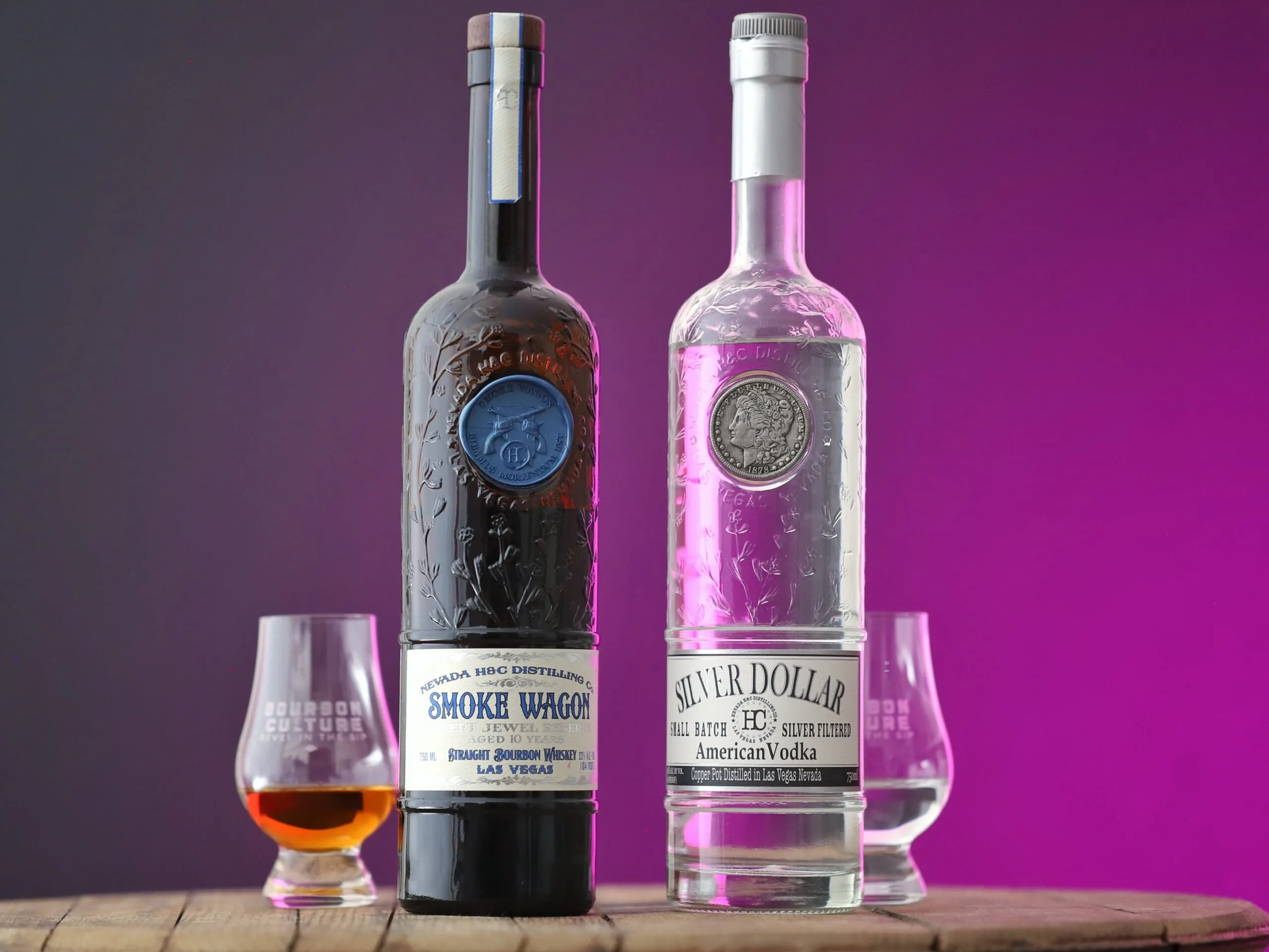| Don't like ads? | No ads |
*Bourbon Culture is reader-supported. When you buy through links on our site, we may earn an affiliate commission.
When I was younger, drinking alcoholic beverages was only about the way it made you feel and how you interacted with the people around you. I didn’t care what was in my glass back then as long as I was having fun.
Money was also a big driver in what I would buy, which is why I often turned to a clear distilled spirit that could be mixed into something that made it taste better (usually a Bloody Mary). It did not eve have to be the smoothest vodka around, just something that would minimize the next-day hangover.
American Whiskey was something I discovered only when I got a little bit older and cared more about the quality of what I was drinking.
This led to more purchases of a lot of bourbon and less purchases of clear spirits. If you open my liquor cabinet now, you’ll find only three bottles of vodka; Smoke Wagon Silver Dollar Vodka, Skyy Vodka and this weird bottle of Western Son Watermelon Vodka (don’t ask).
I’m a big believer in knowing what you’re drinking, so this is why I decided to write this article. I want people to be informed of the differences between the two. You might be surprised to learn that they start off as almost the same thing.
But there is so much more with bourbon that should make you want to spend the money to buy it over vodka. Let’s take a look at what I mean.
Vodka and Bourbon – Similar processes for different types of liquor
Let’s get one important thing out of the way first, 99% of vodka made in the world is not distilled from potatoes. If you believe this, there’s a good chance we had the same history teachers.
Yes, there has been vodka made from potatoes but distilleries around the world almost always make it from grain mash. What type of grain? It doesn’t really matter. It doesn’t even have to be grain – just any plant with a starch content that can be mashed up and will break broken down into simple base sugars. Vodka can even be made from sugar cane, fruit and honey/maple syrup.
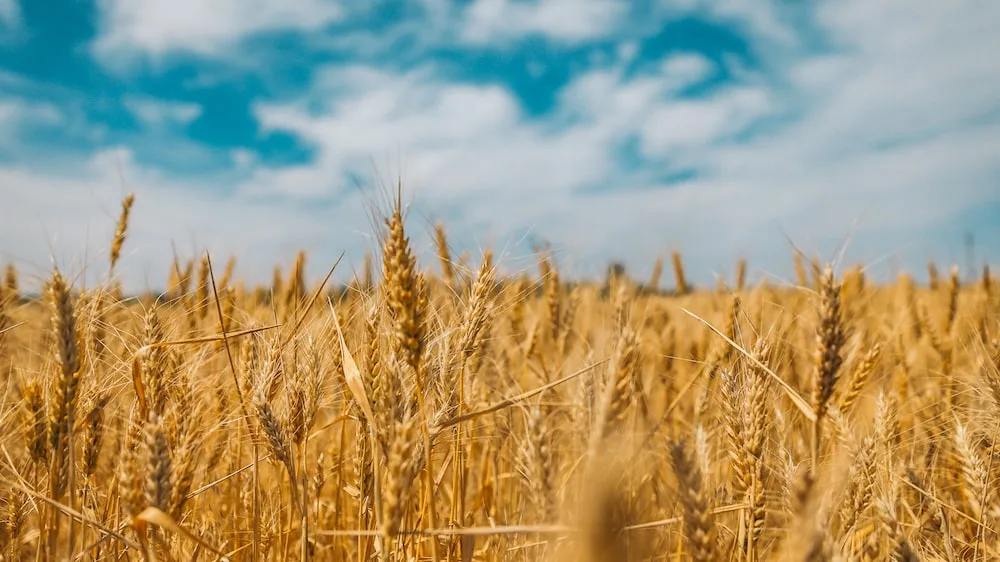
The reason why all vodka isn’t made the same way has to do with the cost of the ingredients. Where there is large amounts of arable land, grain makes the most sense. In more dry, arid or wet regions, fruit or whatever grows well can do in a pinch. The bottom line is that whatever is easily transportable and cheap will be what the spirit is made from.
In the end, the goal is to create a spirit that contains ethanol. There doesn’t have to be a unique flavor to it (most of it will be stripped away during the distilling process, but more on that in a minute) and most people prefer their vodka without any “taste.”
While we won’t get all the way into the origins of vodka, know that in the United States, Vodka is primarily made from corn. In Europe or Russia, wheat would be a dominant grain since their agriculture systems are set up to produce a lot of that.
Wait a minute, corn and wheat? This is starting to sound a lot like the start to making a bourbon. If you didn’t know by now, bourbon has to use at least 51% corn by law and if anything else is used, it must be fermented mash of cereal grains too.
Fermenting Process – Vodka versus Bourbon
So you’ve got your big tanks of warm water, milled grain floating around and enzymes are breaking down the starches into easily-digestible sugars (all of this is known as “the mash”). In bourbon, the barley malt in the mash bill usually provides enough enzymes for the yeast to do its thing.
In vodka fermentation – since a wide range of ingredients could be used, a powdered enzyme is usually added in. The enzymes are there to convert the sugar chains into smaller 3-molecule chains. This size of molecule is necessary for yeast to consume and transform into alcohol.
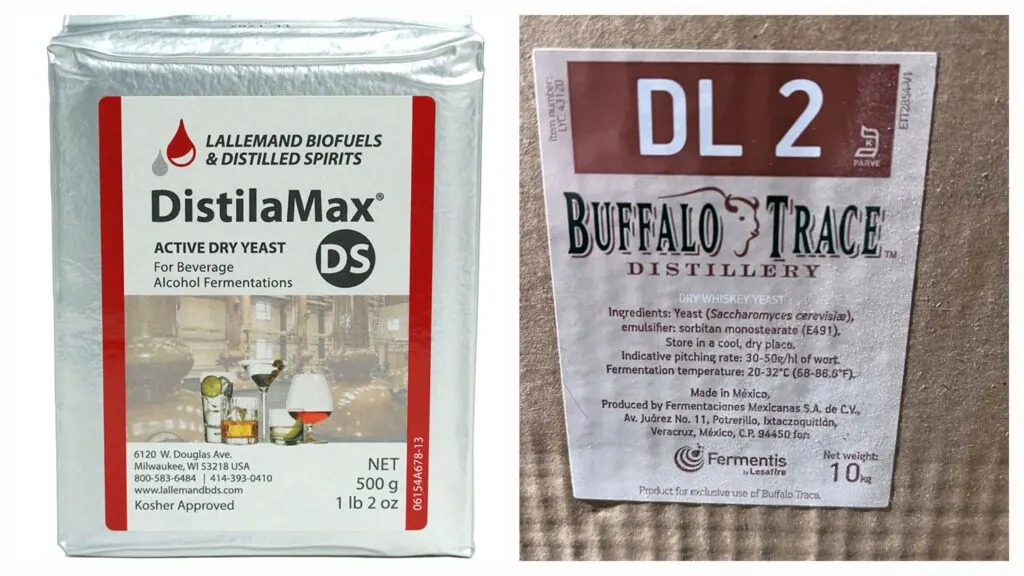
Now comes the fermentation process. This is where yeast consumes the simple starch chains that the enzymes created and digests it into carbon dioxide and alcohol. Both bourbon and vodka start out like this. The yeast each of them use are very different from each other.
Vodka, which is a grain neutral spirit, typically uses a yeast that will yield a much higher alcohol content. It is not uncommon for yeast used in the vodka production to achieve an alcohol percentage of 18 percent alcohol by volume once it’s done fermenting. Bourbon fermentation typically achieves half of that – around 9 percent ABV.
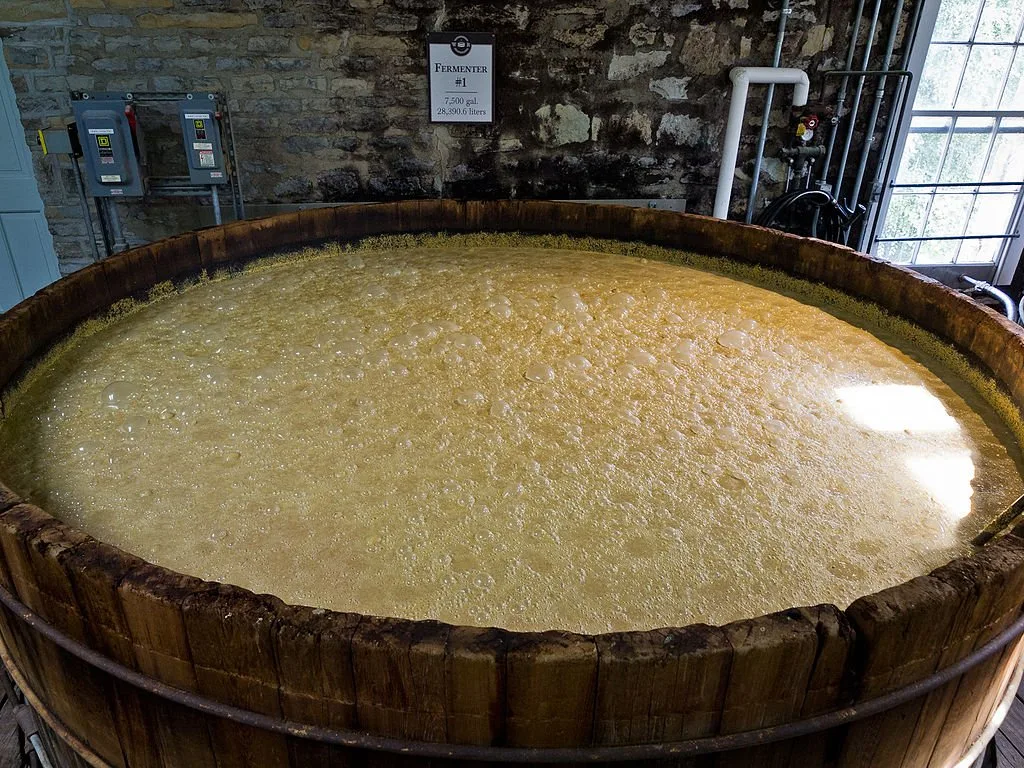
The yeast selection for bourbon is often chosen because it will impart different flavors and scents through the fermentation process (through the production of various congeners and esters). Think of the yeast bourbon uses much like the way seasoning is done with food. No two chicken dishes will taste the same if different seasoning is used.
With vodka, the yeast is designed to produce as few flavors as possible, resulting in a cleaner, more neutral taste when it’s done distilling. Sure, there are many vodkas that have additional flavor added after the fact, but most distilleries want to make a pure spirit in bulk and add flavoring as they see fit afterwards; not the other way around.
But there’s another reason why the yeast for vodka doesn’t need to make flavors during the fermentation process. That reason is explained in the differences between both spirits when they are distilled.
Vodka and Bourbon Distillation Process: Main Difference
You might be surprised to hear that almost all distilleries that produce bourbon can use the same stills to produce vodka too. To keep things simple, let’s just talk about column stills since these are the kinds that make a majority of the world’s vodka and bourbon.
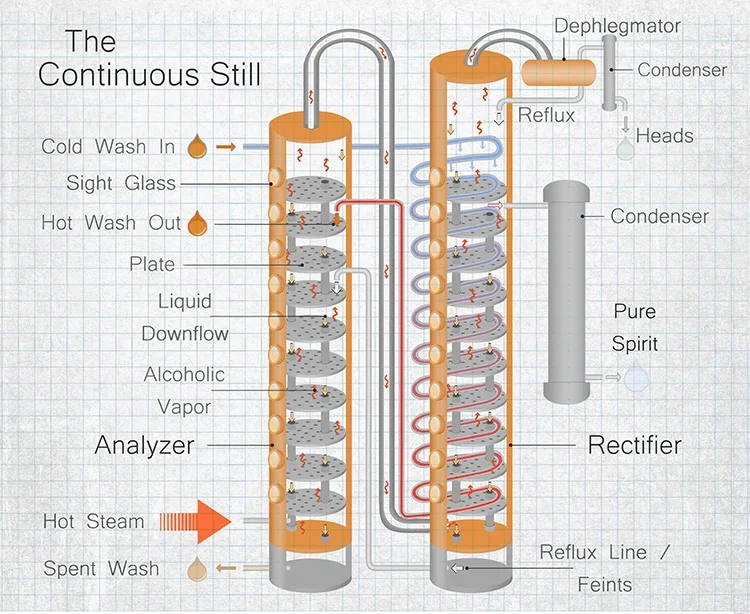
The most simplified way to explain a column still is to imagine a very tall tube that has steam heat rising from the bottom. The fermented mash gets injected around the middle of the still and begins to descend.
The rising steam hits that mash and chemical reactions begin where more steam and alcohol vapors are created and begin to rise towards the top. There are holes near the top that are calibrated to allow the escaping steam/alcohol mix to exit the still at a certain proof (since alcohol and water have certain densities).
For bourbon, the law mandates that the maximum proof it can be distilled to is 160 proof. With vodka production, that number is much higher – usually in the neighborhood of 190 proof or more. Most bourbon producers stick between 130 and 140 for the proof because it preserves the delicate compounds that carry extra fruity, floral or herbal notes.
Vodka producers know that distilling it to 190 or more essentially destroys those compounds leaving a very “neutral” tasting liquid that is almost entirely water and ethanol.
Light Whiskey – A Type of Whiskey for Vodka drinkers or a Vodka for Whiskey drinkers?
Could you put vodka into wooden barrels to age it? Yes, but 190+ proof would be way too high. Why?
Because contrary to what bourbon enthusiasts might think, water is one of the main reasons that bourbon takes on the flavors and characteristics from the wood of the barrel. Water dissolves the wood sugars and is primarily responsible for that great, oaky taste we love so much.
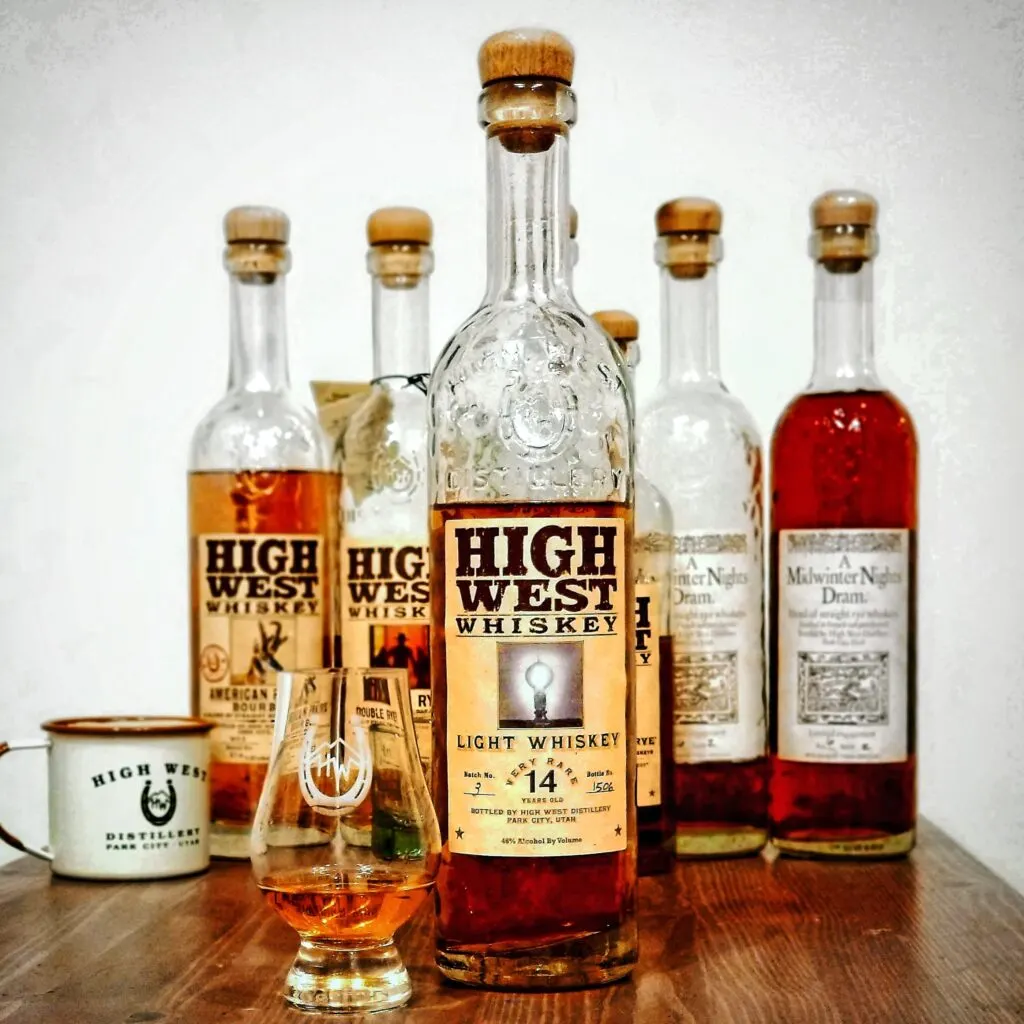
However, in the 1940’s through the 1980’s, the average American consumer didn’t want the oak-forward tannic taste of bourbon. They wanted lighter drinks and switched to vodka and other clear spirits. The bourbon industry was spiraling downward with a demographic that was rejecting it. Light Whiskey was their answer.
Light Whiskey is kind of like a compromise between bourbon and vodka. It is distilled above 160 proof (the legal limit for bourbon) but under 190 proof (where vodka begins). This left a very light tasting spirit that was stripped of most of the esters and congeners that enhance flavors. But to give it a bit more character, it was aged in barrels.
However, in the 1940’s through the 1980’s, the average American consumer didn’t want the oak-foward tannic taste of whiskey. They wanted lighter drinks and switched to vodka and other clear spirits. The bourbon industry was spiraling downward with a demographic that was rejecting it. Light Whiskey was their answer.
Different Types of Whiskey
Light Whiskey is kind of like a compromise between bourbon and vodka. It is distilled above 160 proof (the legal limit for bourbon) but under 190 proof (where vodka begins). This left a very light tasting spirit that was stripped of most of the esters and amount of congeners that enhance flavors. But to give it a bit more character, it was aged in barrels. However, new charred oak barrels would have made the spirit too oaky so distillers elected to use a used barrel in the aging process. Used barrels have almost all of their oak notes removed after years of bourbon moving in and out of their wood. Some color would be gained but not nearly the same amount as bourbon.
The public ended up rejecting Light Whiskey as well. It’s still in production today, but mostly as a means to create blending components for other whiskies (like Canadian Whiskies).
The case for vodka (subjective)
Bourbon drinkers, we can smell you from a mile away if you’ve taken just one sip. The heavy wood tannins aren’t something you can just cover. Its strong flavors also make it hard to use in a lot of cocktails. People at a bar may say they want a stronger drink, but a lot of people who are ordering vodka-based cocktails don’t want to taste the alcohol. They want the fruit or whatever it is that is blended with it.
Plus, fruity vodka drinks just taste lighter. And if a cocktail tastes lighter, that must mean you’re ingesting less calories. This is why most women will never come over to the “dark side” of bourbon-based alcoholic drinks.
Many professionals or people concerned about health benefits won’t either. Vodka is easy to disguise and doesn’t draw close attention to the fact you had something to drink (which seems to be becoming a growing trend for things you’re supposed to hide from public view).
Plus, it’s generally cheap unlike almost all whiskies. For $40, you can get a really high quality vodka. For $40 you can get a really terrible bourbon. The numbers don’t make sense.
The case for bourbon (subjective)
Life is all about experiences. The most unique vacation destinations, the best fusion food restaurant, the most engaging high-performance vehicles and the highest quality drinks. My friend, it doesn’t get any more high quality than bourbon.
There is a magical science behind what a new charred oak barrel can do to alcohol and water. The robust flavor profiles it extracts and the complexity it creates can’t be rivaled by any other drink out there. No additive can replicate what it tastes like for a well-aged bourbon. Take that, watermelon vodka!
Flavor is the name of the game for bourbon. It’s all about uniqueness, approachability and a sexy story to tell. No two bourbons taste the same unlike boring vodka. Vodka is all about hiding from the sting of alcohol because it has no body.
Bourbon is about embracing the rush of flavors, spice and oak. It is full bodied and can actually be enjoyed without putting the whole bottle in a freezer.
Want to amaze friends and captivate curious drinkers? Tell them the backstory about some of the brands. Storytime with drinks – what could be better? James Bond can have his boring martini’s. The real spirit of the 21st century is bourbon.
Bottom Line
Bourbon and vodka are both two spirits with so much sales volume in the marketplace that neither seems likely to surrender a big chunk of its drinkers to the other. Obviously, we’re a bourbon blog writing about bourbon stuff so we’d pick that any day of the week.
I get it, vodka does have some advantages. But at the end of the day if I want a lighter bourbon drink, I’ll just put more ice in my glass or a splash of water. As for vodka, well, it’s for people who don’t yet understand that great flavor is available usually 1 aisle over.
Featured Products
- Neat Traveler

- View Larger
- Description:The Aged & Ore Neat Traveler is a complete travel kit for spirits. We combined our widely praised Neat Glass with one of our 3oz Flight Bottles and housed them together in a custom EVA travel case. Perfect for a night away with your favorite pour. The tie
- Bottle Flight

- View Larger
- Description:The Aged & Ore Bottle Flight is a premium set of 4 custom silicone wrapped glass bottles designed to transport and share samples of your favorite spirits. The flight bottles come in a custom EVA travel case that fits perfectly in any small bag. An Aged &
- Travel Bundle
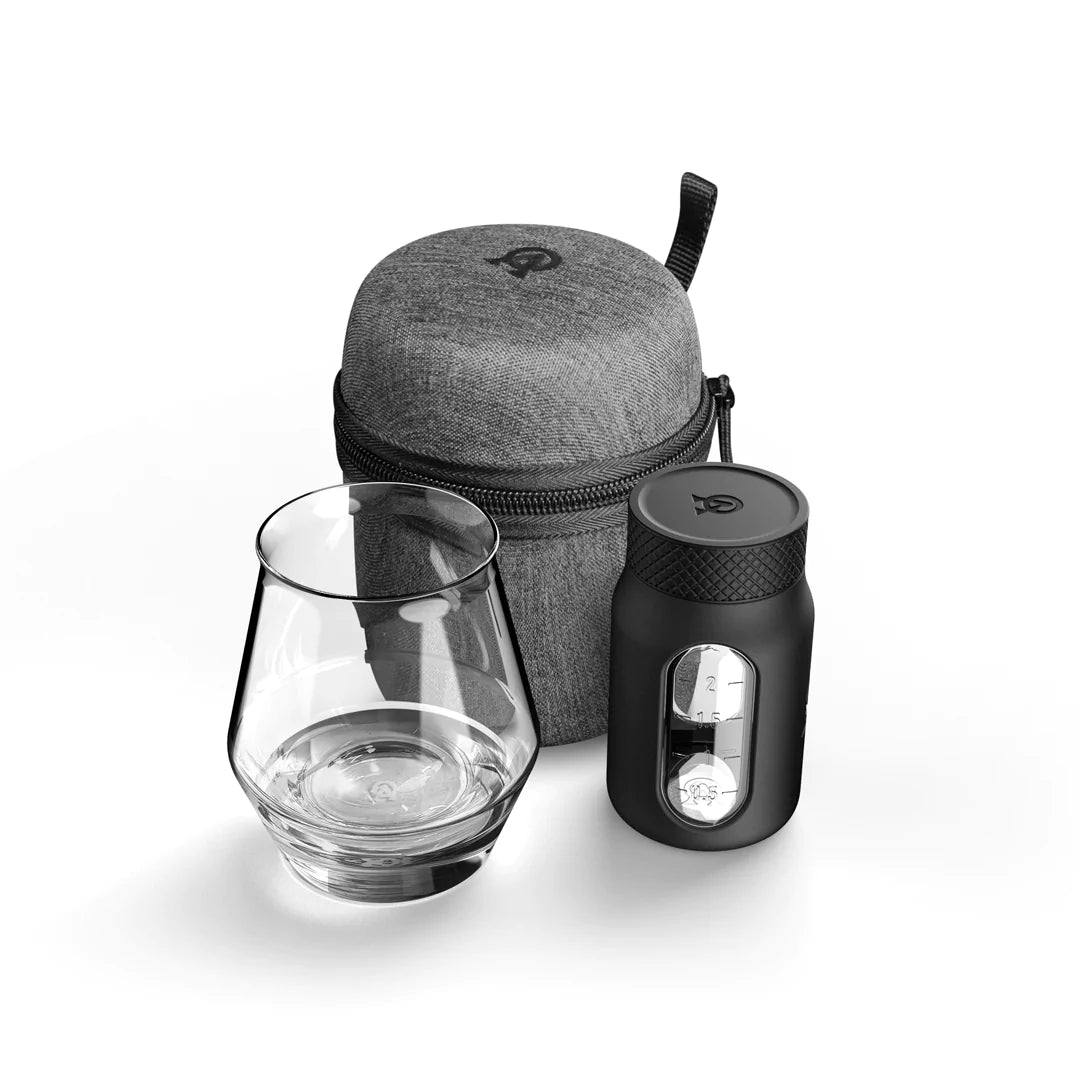
- View Larger
- Description:This Bundle combines two of our crowd favorite products, creating the ultimate travel bundle to bring along your favorite spirits and glassware. Bundle Includes: Neat Traveler (Gray) Bottle Flight (Gray) Note: This bundle is only available in gray and col
*Bourbon Culture is reader-supported. When you buy through links on our site, we may earn an affiliate commission.

